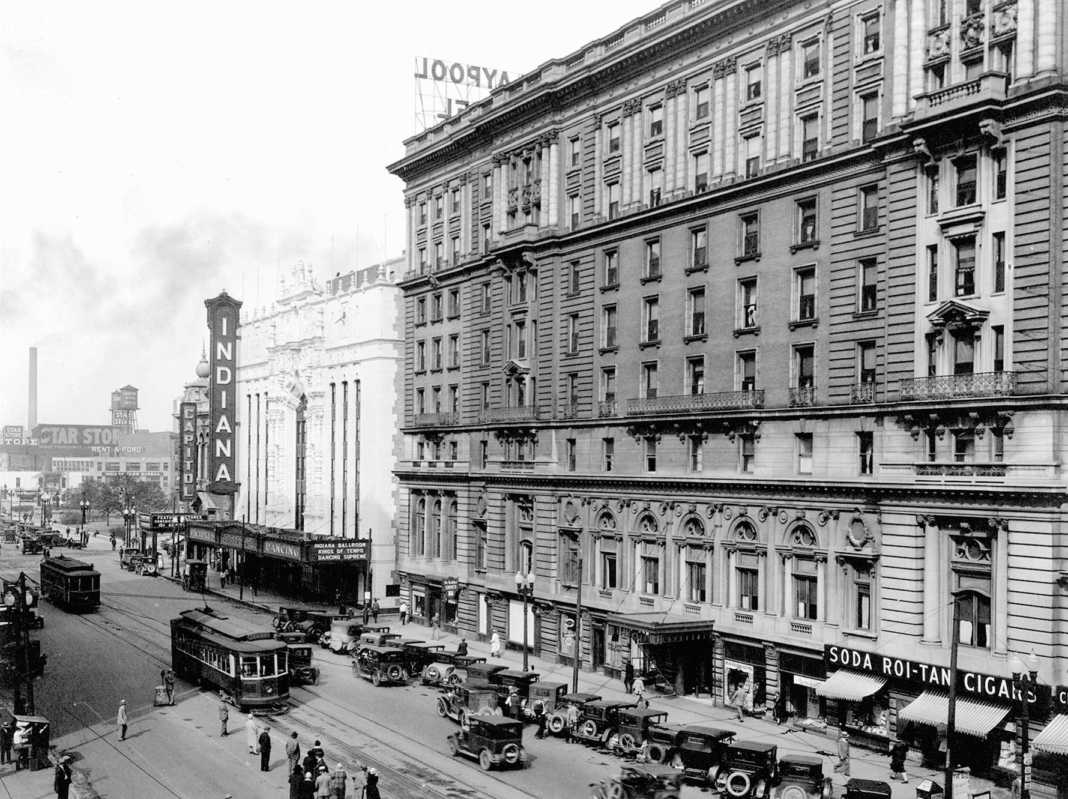
In 1816, Congress decided to give the state of Indiana four square miles to lay out a capital city. Four years later, the spot of that land was finally chosen near where Fall Creek meets the White River.
Discover bygone Indianapolis history >
In the years since, many buildings, companies, legends, and people have come and gone. While they are now only shadows of the past, they help to form the history and heart of Indianapolis.
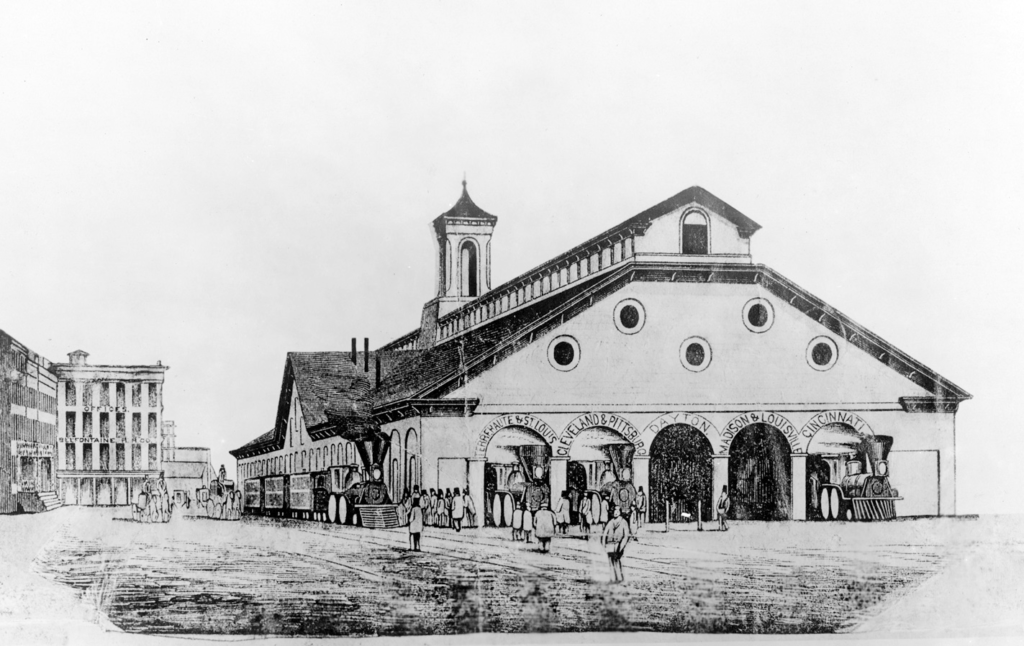
Union station, circa 1853. This sketch shows what the original station, constructed from 1852 to 1853, looked like. The city would outgrow the station by the early 1880s. 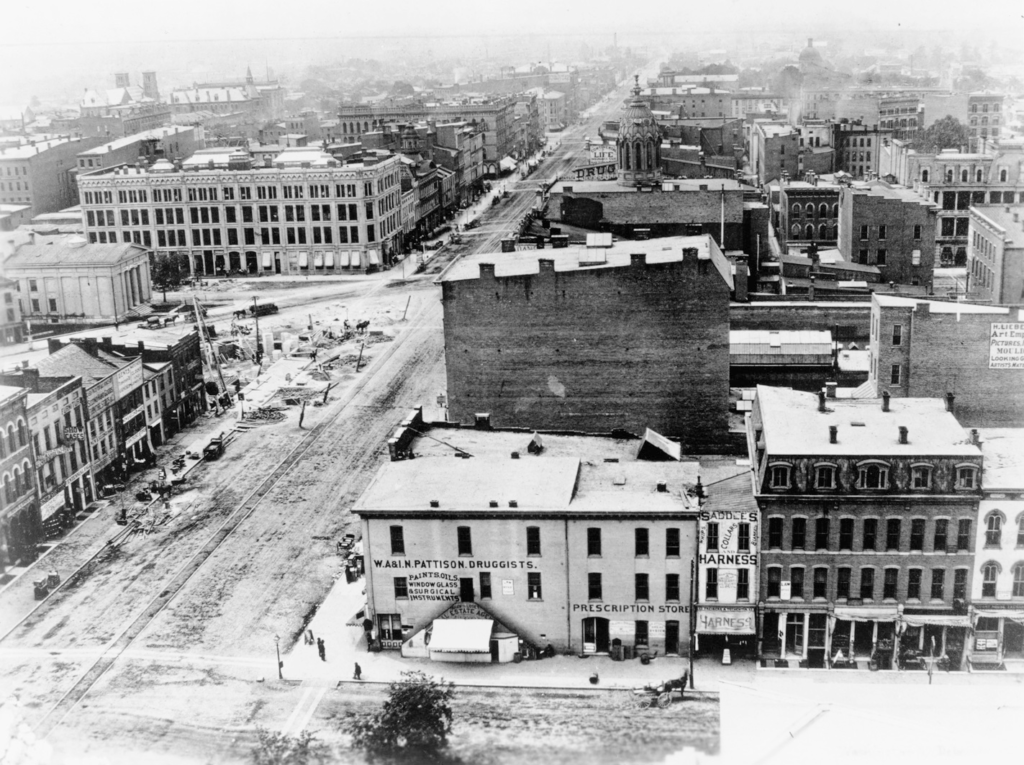
Washington Street from Delaware Street, in 1875. Indianapolis was still a rough town with dirt streets when a merchant named Lyman Ayres moved to town. 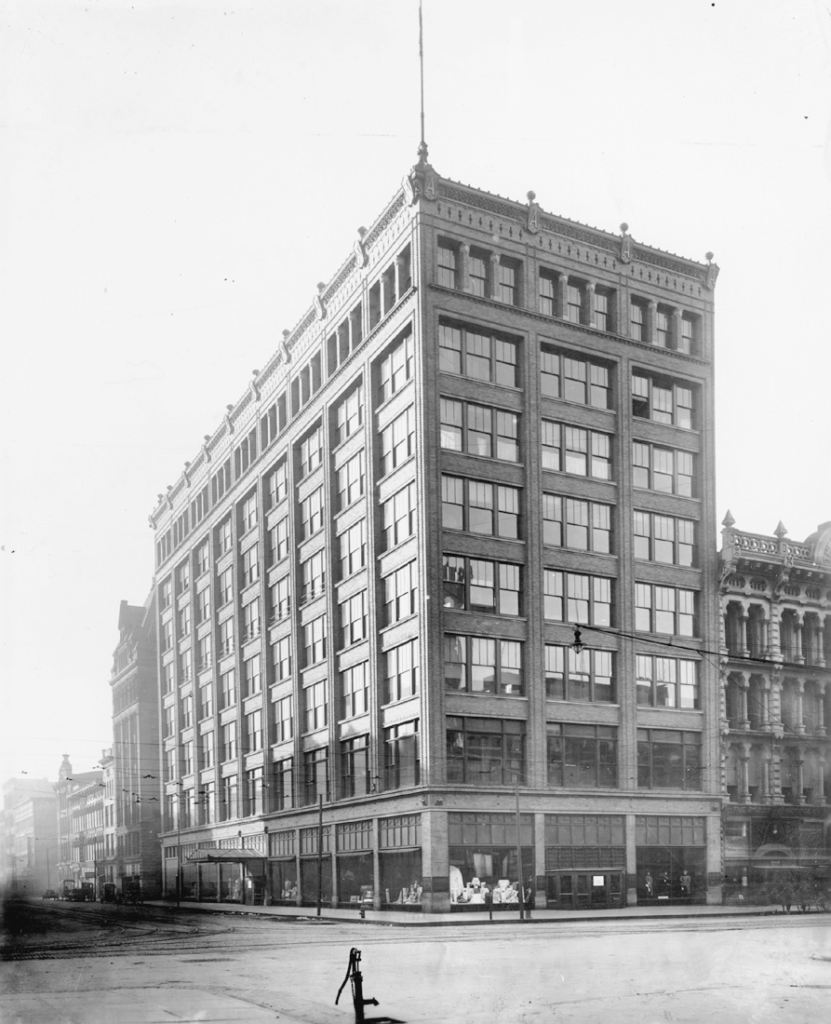
The new L.S. Ayres store, in 1905. Ayers launched a department store and eventually built this eight-story building at the southwest corner of Washington and Meridian Streets. It opened on October 2, 1905. It was the largest store in the state at the time. Note the water pumpfor horses in the foreground. 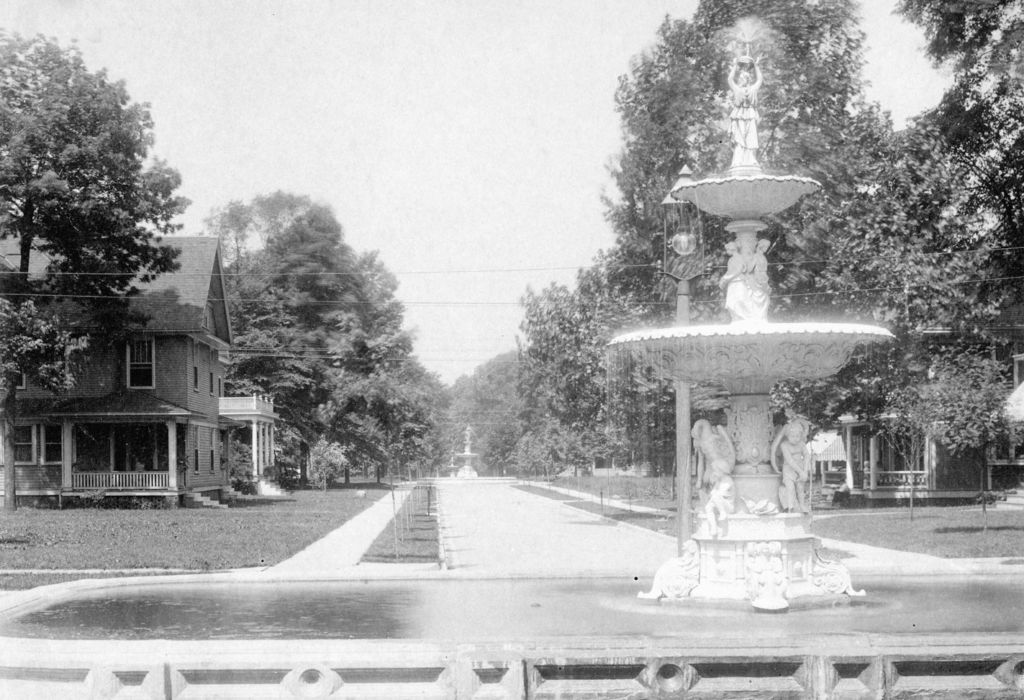
Woodruff Place’s Cross Drive, in 1906. Beautiful homes, tree-lined streets, and statuary explain why Woodruff Place was popular with the wealthy during its peak. 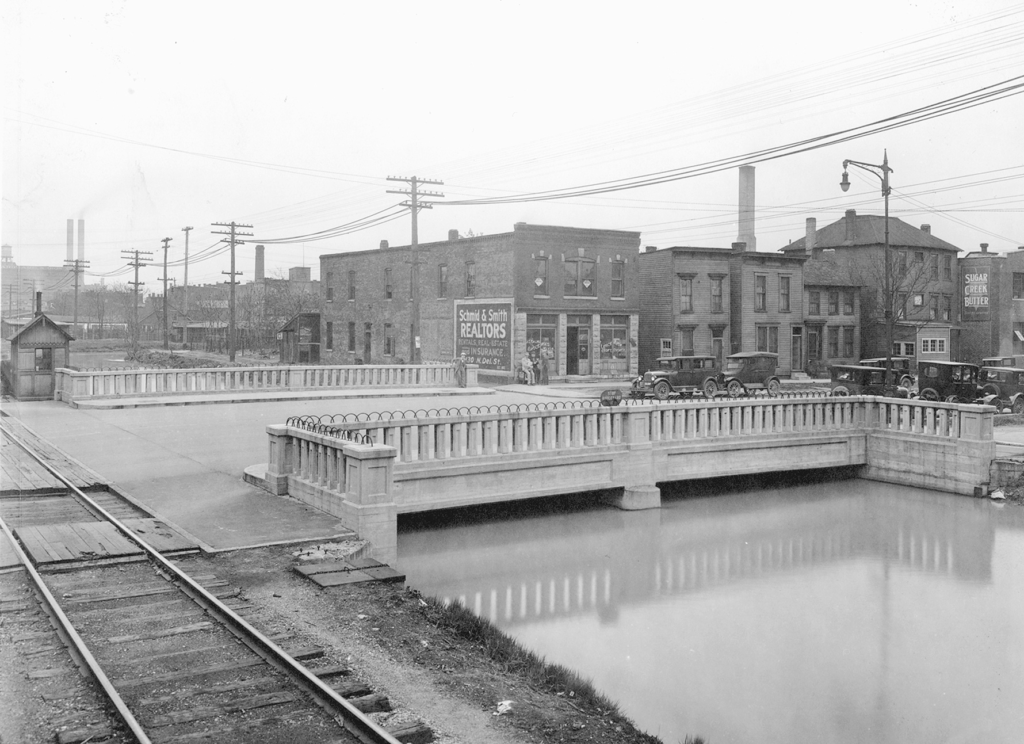
The Thirteenth Street Bridge over the Canal in 1927. A rail line occupies the towpath along this section of the Central Canal. 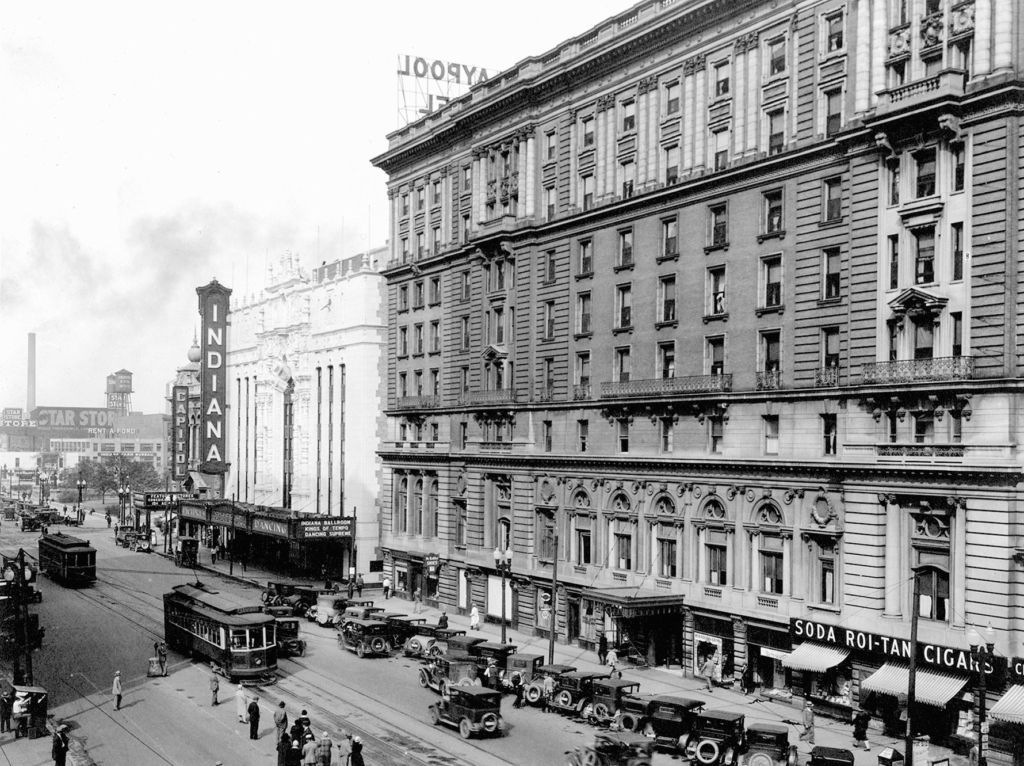
The Claypool Hotel and Indiana theater in 1927. The massive Indiana Theater was built in 1927 immediately to the West of the Claypool Hotel on Washington Street 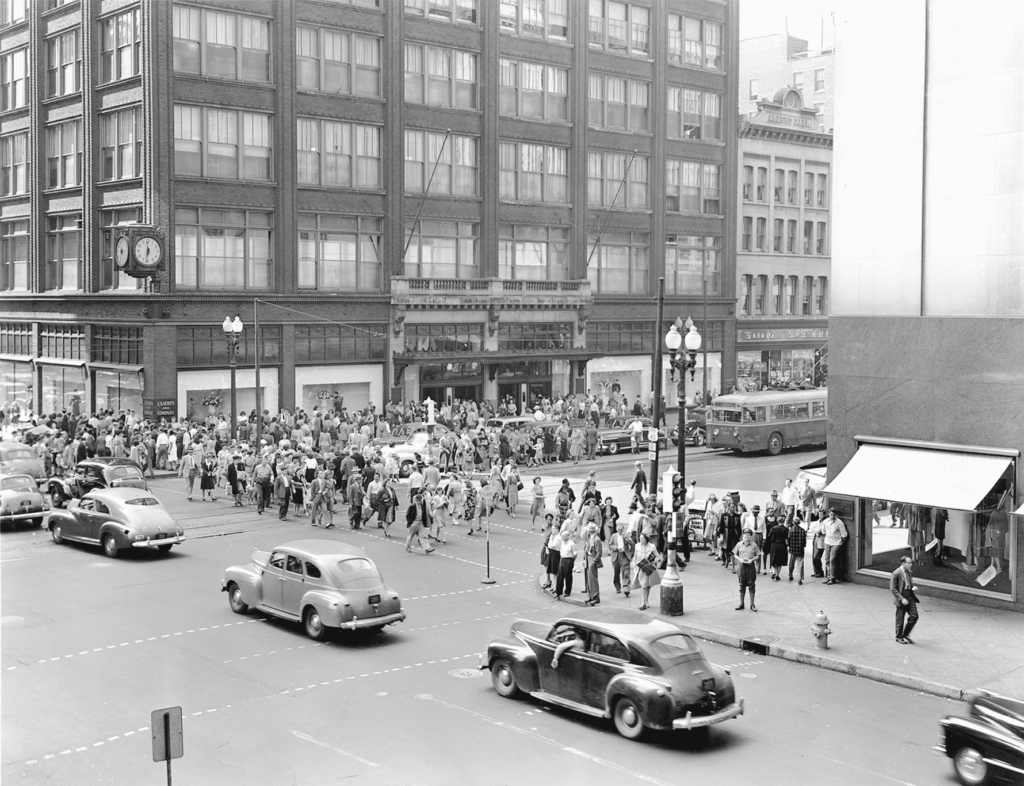
Washington and Meridian in the 1940s. A typical scene at the peak of downtown shopping, with crowds crossing Washington between Wasson’s and L.S. Ayres.
Images in this gallery were sourced from Lost Indianapolis by John P. McDonald
BUY NOW >

